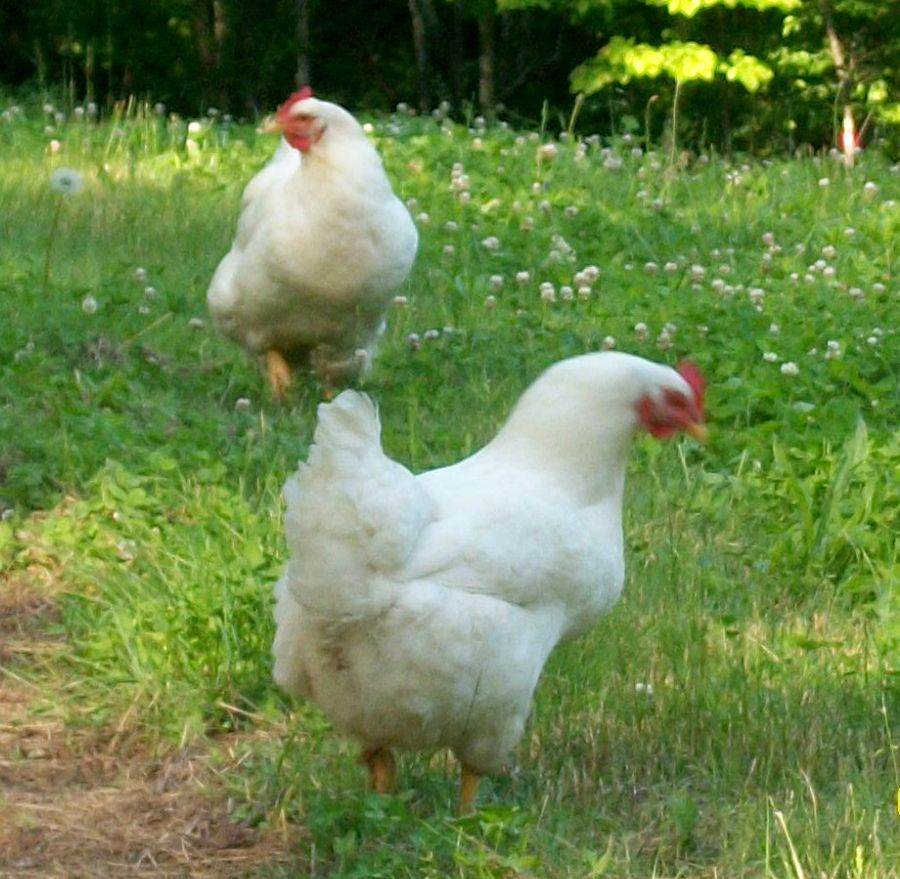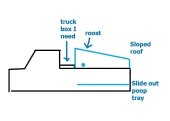
 1
1




Highland Creamery, micro-dairy & family farm.
https://www.facebook.com/home.php#!/highlandcreamery




1. my projects
 1
1




Highland Creamery, micro-dairy & family farm.
https://www.facebook.com/home.php#!/highlandcreamery




"You may never know what results come of your action, but if you do nothing there will be no result”
How Permies.com Works
Be Nice




1. my projects





Ask me about food.
How Permies.com Works (lots of useful links)

 1
1




 1
1








 Because of this, I'm investigating the "Korean Natural Farming" technique of the stationary coop that self cleans and provides it's own bugs and ferments. The quest continues.....
Because of this, I'm investigating the "Korean Natural Farming" technique of the stationary coop that self cleans and provides it's own bugs and ferments. The quest continues..... Highland Creamery, micro-dairy & family farm.
https://www.facebook.com/home.php#!/highlandcreamery




Highland Creamery, micro-dairy & family farm.
https://www.facebook.com/home.php#!/highlandcreamery
 2
2




 1
1




Jay Green wrote:You might try using the deer netting around the garden instead of around the chickens. I've found it to be a much better use of fencing and the chickens don't fight so hard to get INTO the fence as they do to get OUT of it. In this effort you won't have to move the fence anymore and work is much reduced, the soils don't get compacted and over worked as they forage far and wide.
Learned that one years ago...easier to fence an animal out than in.
Highland Creamery, micro-dairy & family farm.
https://www.facebook.com/home.php#!/highlandcreamery








 1
1








Alison Kouzmanoff wrote:I'm having a problem keeping my chickens in. My chickens are around 10 weeks old and at least one of them can fly over a 6.6' fence. I plan to solve the problem by clipping her wing, although I would rather not. Kevin MacBearach talks about his chickens flying over his 7.5' fence but in the other photos the fencing looks to be about 4' high. And electric netting is only about 4’ high. Why don’t the birds fly out?
"You may never know what results come of your action, but if you do nothing there will be no result”
How Permies.com Works
Be Nice




Highland Creamery, micro-dairy & family farm.
https://www.facebook.com/home.php#!/highlandcreamery











Ask me about food.
How Permies.com Works (lots of useful links)





Kevin MacBearach wrote:I think the next type of coop I'll build will be a permanent one with a roof on it and a deep little floor. Like someone said, chickens aren't ruminants, they shouldn't be grazing in paddocks. And after trying them on the pasture, I can't see any benefit to the land after passing them over it in a paddock.






Julia Winter wrote:I think one of the points of chickens in pasture is for them to follow the larger animals, like the pigs and the goats. I remember reading about Joel Salatin's farm and how the chickens are sent into the pasture exactly X days after the cows, so the maggots in the cow piles are big and juicy. They break up the droppings, spreading them out, which I figure is good for the pasture.
My own hens lived mostly on deep litter, albeit without IMO's (I would like to learn how to cultivate those!). I would let them out more or less depending on how much energy I had for cleaning up after them. (This is a suburban yard, so they're doing things like kicking mulch all over the place.) We fastened plastic clamps to the fence posts in their run, so I would dig a big handful of dandelions (or some other weed) and attach them in a bunch to the posts. I found that they could eat the leaves much more efficiently if they were anchored--when I just tossed in the plants, they would try to eat them and end up flipping them all over the place.
I've found that if I let them out in the late afternoon or early evening, they don't do as much damage and I can close them in again once they go in to roost. Maybe you could let the chickens out for short periods of time late in the day and they'll just run from pile to pile and leave your mulch/garden/porch alone.
Highland Creamery, micro-dairy & family farm.
https://www.facebook.com/home.php#!/highlandcreamery











Ask me about food.
How Permies.com Works (lots of useful links)





Kevin MacBearach wrote:I think the next type of coop I'll build will be a permanent one with a roof on it and a deep little floor. Like someone said, chickens aren't ruminants, they shouldn't be grazing in paddocks. And after trying them on the pasture, I can't see any benefit to the land after passing them over it in a paddock.
 But - if I pay close attention, I may. I can certainly tell that leaving their tractor in one place for a week made a difference in how that spot looks - but whether the soil will show improvement over time, as opposed to the current beatdown state of the plants in that area - ...
But - if I pay close attention, I may. I can certainly tell that leaving their tractor in one place for a week made a difference in how that spot looks - but whether the soil will show improvement over time, as opposed to the current beatdown state of the plants in that area - ...






Peter Ellis wrote:
Kevin MacBearach wrote:I think the next type of coop I'll build will be a permanent one with a roof on it and a deep little floor. Like someone said, chickens aren't ruminants, they shouldn't be grazing in paddocks. And after trying them on the pasture, I can't see any benefit to the land after passing them over it in a paddock.
I don't know that not being ruminants means they shouldn't be grazing in paddocks. Chickens do graze - and they also hunt insects and other small critters - both of which activities can and do happen in paddocks. Seems to me the primary purpose of the paddock approach is to let the chickens have regular access to fresh feeding grounds and not let them beat up any one area too badly.
By the logic above, it doesn't make sense to have pigs in paddocks - they are not ruminants, right?
As to seeing the benefit - I expect it all depends on the time period over which one observes, how closely one observes and the very specific details of one's situation. For example, I really doubt that I am going to be able to detect any impact on my soil from the four chickens I have in my back yardBut - if I pay close attention, I may. I can certainly tell that leaving their tractor in one place for a week made a difference in how that spot looks - but whether the soil will show improvement over time, as opposed to the current beatdown state of the plants in that area - ...
Highland Creamery, micro-dairy & family farm.
https://www.facebook.com/home.php#!/highlandcreamery












Tys Sniffen wrote:
I'm starting to wonder if Paul's experience is based on meat birds or layers... Does anyone have any 'rule of thumb' about square feet per bird for this paddock thing to work best? (more is always better, but what works?)
Tys
Highland Creamery, micro-dairy & family farm.
https://www.facebook.com/home.php#!/highlandcreamery












The student asks the master,
"Master, is the glass half empty? Or half full?"
The master looks at the student and replies,
"The glass is full."




My blog: http://simplicityforjulia.com/




Trying to achieve self-reliance on a tiny suburban plot: http://gardenofgaladriel.blogspot.com




My blog: http://simplicityforjulia.com/















Ask me about food.
How Permies.com Works (lots of useful links)





 1
1








 2
2




. . . bathes in wood chips . . .

|
Don't sweat petty things, or pet sweaty things. But cuddle this tiny ad:
The new permaculture playing cards kickstarter is now live!
https://www.kickstarter.com/projects/paulwheaton/garden-cards
|






